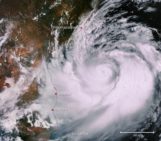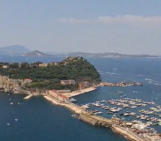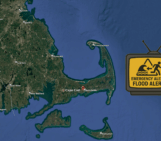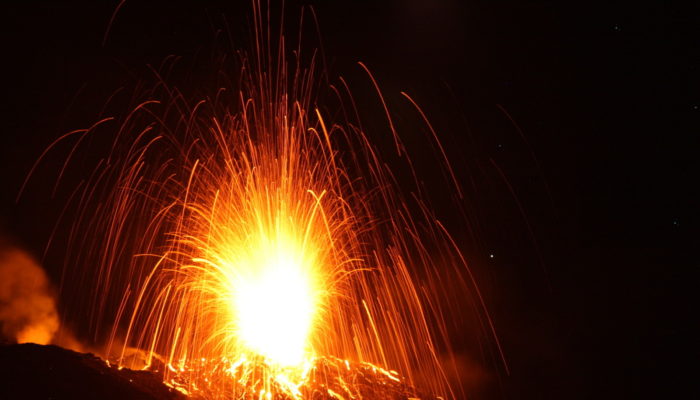
In the last months two paroxysmal explosive eruptions took place at Stromboli volcano: the first one, totally unexpected, on 3rd July (Video 1) that sadly cost the life of a person and the second and, currently, last one about three weeks ago, on the 28th August (Video 2).
Today we try to answer a couple of questions about Stromboli and its eruptions. Are these paroxysmal eruptions common or rare at Stromboli volcano? What are the hazards associated with these eruptions in the context of Stromboli’s island?
The volcanic activity at Stromboli
Stromboli, a volcano located on its homonymous island in the South of the Tyrrhenian Sea, is considered one of the most active volcanoes in the world. Already famous for its persistent explosive character during the Roman ages, they named Stromboli ‘the Lighthouse of the Mediterranean’.
The ordinary eruptive activity of Stromboli is characterised by mild yet spectacular explosions, which eject gas, volcanic ash (i.e. tiny rock particles) and incandescent shreds of magma of decimetric size, i.e. pyroclasts. The latter is particularly capable of putting on a real fireworks display (like in Figure 1), and it is attracting many curious visitors; among them volcanologists, who find Stromboli the perfect natural laboratory where to collect numerous observations.
This ordinary activity is sometimes interrupted by larger explosions that, based on measurable parameters such as the associated seismic signal and ground deformation, are classified as “major explosions” and “paroxysms”. Major explosions can happen several times per year (see the Figure 2). During major explosions, gas and pyroclasts are violently ejected up to several hundreds of meters above the crater terrace. An ash plume can develop and reach up to a kilometre in height. Volcanic ash and lapilli can then fall back on the island’s towns depending mainly on wind strength and direction. The larger size of pyroclasts, bombs and blocks of several decimeters in size, can reach up to hundreds of meters away from the crater area following ballistic trajectories. Bombs and blocks can fall while still hot and, when they reach the vegetated area, can eventually trigger fires.
Paroxysms are more violent and energetic than major explosions. They are accompanied by loud detonations, plumes of more than a kilometre in height, and they can throw bombs and blocks at distances of a couple of kilometres from the craters, posing a great hazard to the island’s towns. Also, in this case, the incandescent materials, falling down the slopes, can trigger fires in the vegetation (video 1). The eruptive column can collapse and eventually produce fast, and hot pyroclastic flows that, in the past, have been commonly directed downslope, towards the sea from the western flank of the volcano called Sciara del Fuoco. Paroxysms are also associated with the eruption of a magma different from the ordinary and major explosions. The paroxysmal magma comes from deeper below the volcano, is much richer in gas and ascent very fast until it burst in the surface.
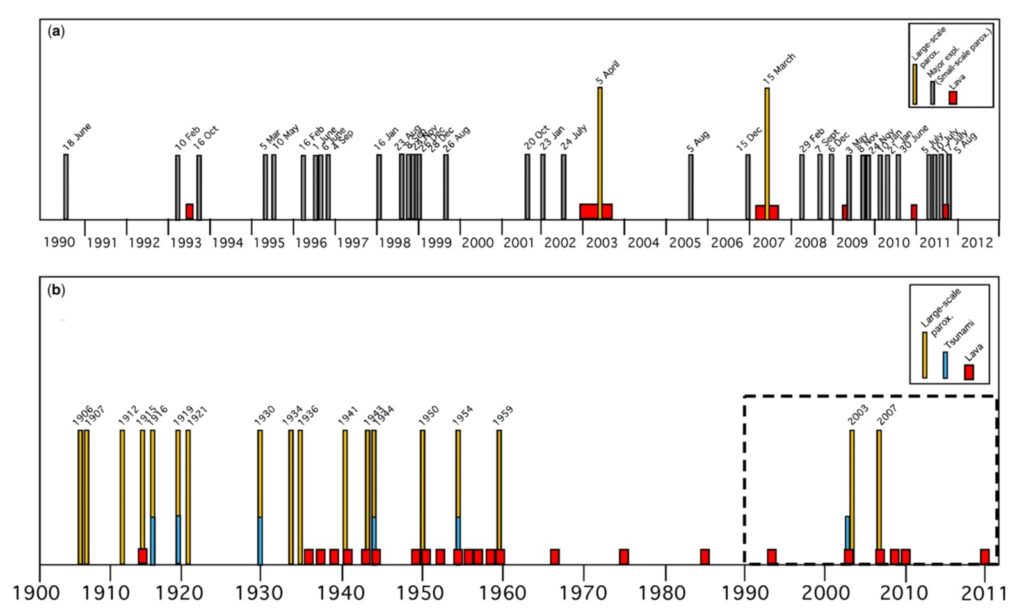
Figure 2. In the upper graph are the large-scale paroxysms, major explosions and lava flows occurring at Stromboli from 1990 to 2013. In the lower graph are the large-scale paroxysms, tsunamis and lava flows occurring in the last century. Big yellow bars=Large-scale paroxysm; Medium grey bars=major explosion; Medium blue bars=Tsunami generated; Small red bars=Lava flow (image from Rosi et al., 2013).
Although both major explosions and paroxysms are violent and energetic eruptions for Stromboli volcano, it should be remembered that they are relatively small eruptions compared to eruptions of other volcanoes in the world. Nonetheless, they pose a significant hazard. Let’s go a bit into more detail.
Volcanic hazards
Stromboli island is inhabited, with a resident population of about 600 people split unequally between the communities of San Vincenzo and San Bartolomeo on the North-East side and Ginostra on the South-West side of the island. In the last 120 years, at least 20 paroxysms have occurred at Stromboli (number updated from the 18 of Rosi et al., 2013), at times accompanied by different volcanic hazards such as ballistic fallout, tephra fallout, pyroclastic density currents and hot avalanches, shock waves, lava flows, as well as secondary hazards like wildfires, landslides and tsunamis (Rosi et al., 2013).
Stromboli is characterised by an open conduit system, contrary to, for example, Vesuvius. An open conduit system means that the magma surface within the conduit is directly in contact with the atmosphere or just loosely covered by fallen back material. Passive and active degassing is a constant and intermittent eruption the rule in such a volcanic system. The incandescence of the magma can sometimes be seen with your naked eyes from the crater terrace, as well as observed on aerial and satellite images. In periods of low-level activity, the magma level drops in the conduit and the activity is characterised by less frequent and weaker explosions. On the other hand, during periods of more intense activity, the magma level raises, and the frequency and energy of explosions can increase too.
An open conduit system like the one at Stromboli may seem less dangerous. However, this type of volcanoes makes it much harder for volcanologists to forecast a more violent eruption before it occurs. Eruptions at volcanoes with a closed conduit system are driven by magma migration as well as over-pressurization of the upper part of the volcanic edifice. These processes are commonly accompanied by measurable surface deformation or seismic activity that can be monitored and used to provide timely information on the activity and the chance to start emergency management reactions. On the contrary, open conduit systems and the constant explosive activity can make significant changes observable only minutes away from the actual event. Moreover, in the case of Stromboli, the number of paroxysmal eruptions recorded and observed with the monitoring network before the 3rd of July event were only two and associated with lava flow emplacements in the weeks or months before the paroxysms, which means that the magma level inside the conduit system had raised.
However, there have also been effusive lava flow events, for example, in 2014, with no paroxysmal activity associated. The 3rd of July paroxysm was anticipated by a small lava outpouring only minutes before the large explosion took place: the blast came at first glance unannounced. Later data analysis revealed that precursors of an anomaly were recorded minutes before the explosion took place, and this is essential information that will serve for the forecast of future similar events and the development of an early warning system, which is an ongoing effort of the monitoring institutes in charge.
Current state of the volcano
Stromboli is currently maintaining a high intensity level activity and since July, with municipal ordinances, no visitors are allowed to climb the summit of the volcano or reach anywhere above 290 m above sea level. Also the marine exclusion zone was extended to 1000 m and later in August to up to 4000 m from the coast in front of Sciara del Fuoco. At the moment, the only people allowed on the summit are volcanologist with monitoring purposes.
References and more to read
M. Rosi, M. Pistolesi, A. Bertagnini, P. Landi, M. Pompilio and A. Di Roberto. 2013. Chapter 14: Stromboli volcano, Aeolian Islands (Italy): present eruptive activity and hazards. In: Lucchi, F., Peccerillo, A., Keller, J., Tranne, C. A. & Rossi, P. L. (eds) 2013. The Aeolian Islands Volcanoes. Geological Society, London, Memoirs, 37, 473-490. doi: 10.1144/M37.14.
Andronico, D & Pistolesi, M. 2010. The November 2009 paroxysmal explosions at Stromboli. Journal of Volcanology and Geothermal Research 196, 120-125. doi: 10.1016/j.jvolgeores.2010.06.005.
Andronico, D.; Taddeucci, J.; Cristaldi, A.; Miraglia, L.; Scarlato, P.; Gaeta, M. The 15 March 2007 paroxysm of Stromboli: video-image analysis, and textural and compositional features of the erupted deposit. Bull Volcanol 75:733. doi: 10.1007/s00445-013-0733-2.
Instituto Nazionale di Geofisica e Vulcanologia (INGV) blog post about the eruption of 3rd July: Link
Laboratorio Geofisica Sperimentale (LGS) Florence news and reports: Link
Stromboli livecam – Sciara del Fuoco: Link
Additional videos paroxysms 3rd July 2019
A thermal camera record: Video
Remote record of the explosion: Video
Additional video paroxysms 28th August 2019
Close record from the explosion: Video

